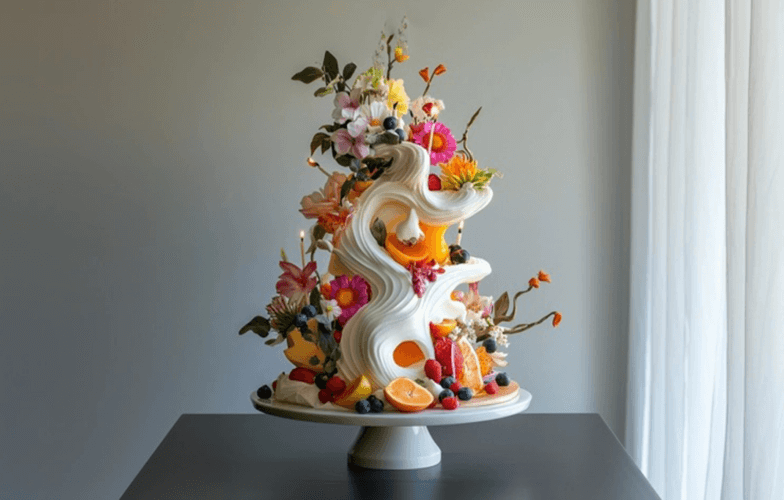
Creativity by Mory Sacko
InterviewsDiscovered in the 2020 edition of the tv show “Top Chef”, Mory Sacko contributed to the 2023 edition of our Color Intelligence Spring & Summer trendbook. A Michelin-starred chef, he played the game of our colour ranges and themes, taking inspiration from our proposals to create a unique dish, combining Japanese and Malian influences.
Cécile: What do you think makes you different?
Mory: I’m very curious, and thanks to this curiosity I’ve acquired so much knowledge, giving me the means to do as I choose. I have the resources to create, the resources to be independent. For example, I can combine cuisines that, on paper, don’t necessarily go together. It can start with a product, an idea for a recipe or something I’ve tasted. I’m not afraid to make a big, happy mess. I’m not afraid to go brush up against other domains. I’ve learned to break free from codes and rules so I can have as much space as possible to express myself. It’s this liberty that allows me be more creative every day.
C: What rules do you set for yourself?
M: The rules I’ve made for myself are fairly simple. Of course, something has to seem good to me, but I also try and stay with what I like and not move toward a purely experimental cuisine. In my kitchen we respect the seasons, which is absolutely logical for a cook. This rule is ingrained in every cook who uses the right working methods. I’m a strong believer in this – the product is the basis for everything.
In my cuisine, there are, of course, a few imported ingredients. I work with the principle that if we can get a product through much shorter channels, for example locally, we do so. In this spirit, some producers are adapting Japanese products to the French climate, creating a channel with less of an ecological footprint. It’s also everyone’s responsibility to make sure that the social impact isn’t neutral: the entire value chain has to be respected and taken into consideration.
C: What stimulates your inspiration?
M: My main inspiration is motivated by the product. I love to take a product and think about what I can do with it. I try everything, and I start by trying to reveal its full identity. My liberty comes from a constraint, but it’s this constraint that lets me express my freedom through what I do. I believe that restrictions are there to boost creativity.
C: How did you handle the COVID-19 crisis?
M: We immediately understood how important it was to adapt and prove our agility. I didn’t want to create a gastronomic offer, since we had only opened the restaurant two months ago. So I turned to street food, and, to my surprise, we really enjoyed ourselves working within those boundaries. You need to be very quick to react and keep a young, exuberant attitude to maintain your DNA and your identity while you’re “street fooding.” Doing something that’s simpler and more accessible doesn’t necessarily mean you have to do something basic. Here again, you have to put your whole heart into it.
C: What do think will be the major food issues in the future?
M: Above all, I see three main food concerns in the future:
- Respect for products and an awareness of their impacts
- Social engagement and attention to all the stages in the value chain
- Improving working conditions
C: What did you want to accomplish with your Cuisine Ouverte television show? What do you gain from the experience?
M: The show was developed following a conversation. I wanted to visit with other chefs, and I always combine business with pleasure. Discovering, learning and sharing ideas fuel my curiosity. With a lot of luck and hard work I was able to create my own customized playing field. I admit that I have fun in every episode and have very rarely been disappointed.
M: Cécile, what does creativity mean to you?
C: For me, creativity is, above all, an attitude. It means not being stuck, not being afraid of friction or of heading into the unknown. It’s essential to be very open to the world and how it’s changing. It’s not for nothing that curiosity goes with creativity. You can’t be afraid of being shaken up and you must always question yourself in order to deliver solutions.
Every day at the agency we have to ask: Who are we creating this project for? Who does it target? For which market? Which positioning? Which consumers? Nothing is better for boosting creativity than starting from a restriction but not stopping yourself from stepping outside the box to generate innovation and extraordinary results. The greatest creativity is engaged, fair, responsible and adapted to the target market.



